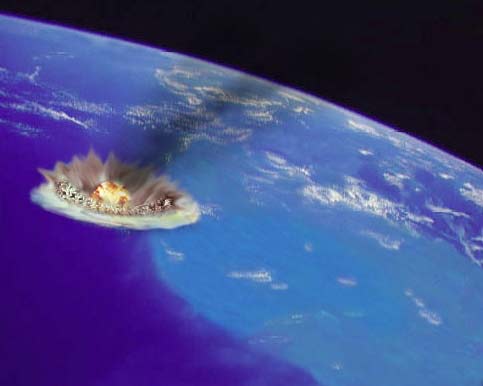 |
|
Meteorite Crater in Gilf Kebir Desert |
A massive meteorite crater has recently been discovered by experts from Boston University in the Gilf Kebir Desert, Western Egypt, thanks to satellite imagery.
The crater measures 31 kilometers in diameter, making it 25 times larger than the famous meteorite crater in Arizona, USA. It has remained unnoticed due to its immense size.
Dr. Farouk El-Baz, Director of the Remote Sensing Center at Boston University, commented: “Previous searches for meteorite craters focused primarily on smaller craters, especially those identifiable on the ground. The advantage of satellite imagery is that it allows us to view an entire area comprehensively.”
The enormous size of this crater suggests to American scientists a violent impact from a large meteorite similar to the Barringer meteorite, which is 1.2 kilometers long and fell in Arizona. This impact devastated all life across an area of several hundred square kilometers.
65 million years ago, a large meteorite struck the Earth, creating the Chicxulub crater in Mexico, which has a diameter of approximately 160-240 kilometers. It is believed that this impact led to the extinction of the dinosaurs.

Model of Meteorite Impact Creating the Chicxulub Crater
in Mexico (Image: sirrah.troja.mff.cuni)


















































